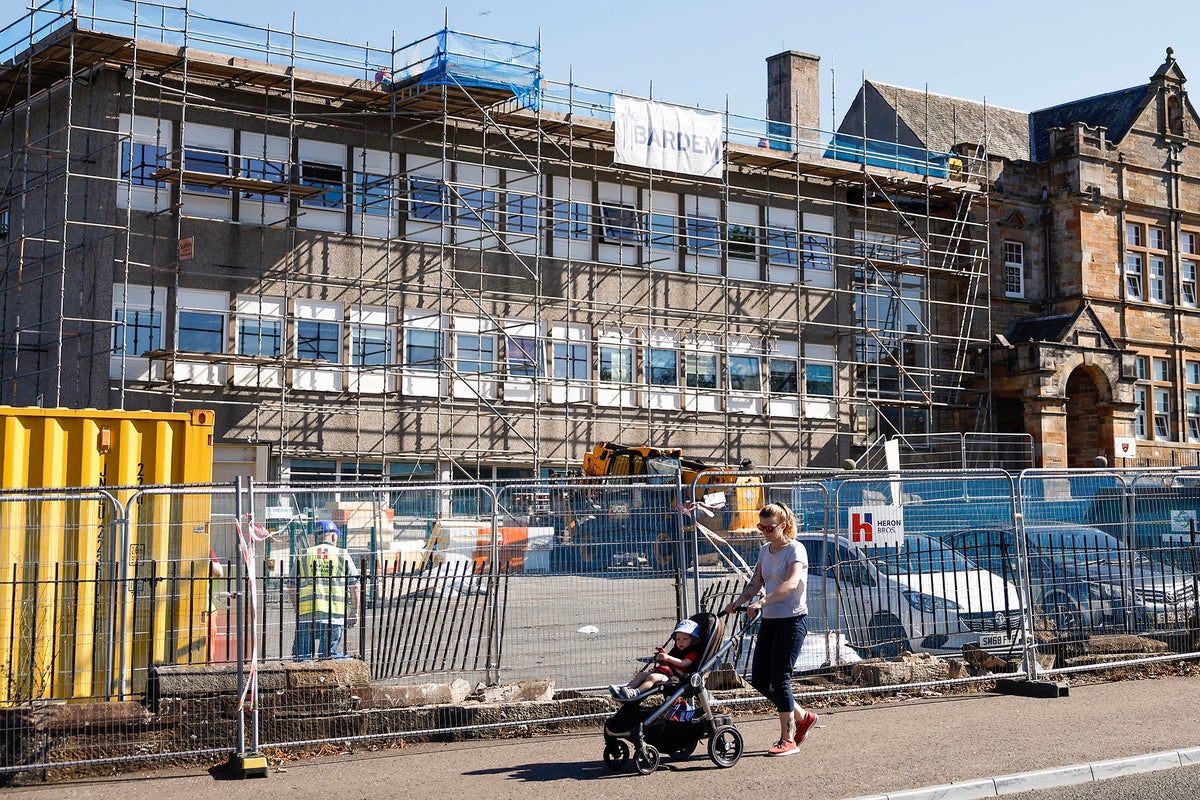
There are growing fears that the crisis sparked by the closure of schools over crumbling concrete could spread to offices, shops and even housing, as one of Britain’s biggest landlords ordered a review of its buildings.
Landsec, a major owner of UK shopping centres and office blocks, is to survey its post-war buildings to check for the presence of the reinforced autoclaved aerated concrete (Raac).
It comes as councils and housing associations were urged to review all their stock for the concrete material compared to an “Aero bar”, amid concerns that tenants could be living in unsafe homes.
The Regulator of Social Housing (RSH) has said Raac is not suspected to be “widespread” in post-war tower blocks, but has asked all social housing providers to check their buildings for the material. Experts told The Independent it could be in some high-rise roofs.
Clarion Housing Group, the nation’s largest housing association, has already began reviewing its buildings for RAAC concrete. A leading property consultancy told The Independent that they had been asked by another housing association to review eight of their older buildings.
The National Housing Federation – the umbrella body for social housing associations across England – said it was still consulting with its members on how to best review stock for Raac problems.
A spokesperson from the NHA said: “The NHF is communicating with our members to make sure they have the most up to date advice and guidance on RAAC, and we stand ready to offer support to our members and government on this issue.”
The Local Government Association (LGA) has ordered councils to review whether any buildings – including social housing – contain Raac.
Steve McSorley, director of the structural engineering consultancy Perega, said: “Raac is less likely to be prevalent in 1960s tower blocks. It was rarely used in anything more than three storey high – but it’s possible it will be found in some roofs.”
He added: “The bigger issue is now in the private sector – you will have some in offices, factories, department stores and shops. The problem is you don’t have government to overseeing the review.”
Around 100 schools have been closed after Raac was found— (PA Wire)
Mark Allan, chief executive of Landsec, told the Financial Times it would “definitely” survey for Raac, saying it would be targeted at a small number of buildings from the post-war period. “It is incumbent on any responsible property owner to do some work to understand where we might have exposure,” he said.
The Institution of Structural Engineers has urged commercial property owners to conduct a survey “to identify or eliminate the possibility” of Raac.
Mark Reynolds, head of the Construction Leadership Council, said it hadn’t found any commercial buildings at risk of having Raac problems. But the expert said this would change “once companies and individuals begin to investigate or become aware of the risks”.
Social housing lawyers Winckworth Sherwood said all councils and housing associations should now commission surveys. “[They] should not need reminding that they have a legal responsibility to manage their buildings, to meet repair and maintenance obligations …. Inaction is not an option.”
But campaigners have warned that leaseholders on housing estates – hit by major bills for cladding work in the wake of the Grenfell tragedy – could be liable for the cost of surveying buildings for Raac.
Liam Spender, a cladding campaigner, told the i: “I suspect that, much as with cladding, it will snowball … After Grenfell everybody and his dog started inspecting their buildings and it may be the same with this.”
Experts have told The Independent that some of the schools in England found to have crumbling concrete may have to be demolished if repairs become too expensive.
Mr McSorley said removing Raac can range anywhere between tens of thousands of pounds to “the multimillions”, depending on the scale. His own firm has been engaged in a £10m project to remove a Raac roof.
The TUC called on Thursday for the government to create a national risk register for all public buildings in the wake of the Raac crisis.
The union organisation warned that the issue in schools is likely to be the “tip of the iceberg”, with hospitals, libraries, community centres and other public buildings also at risk.







